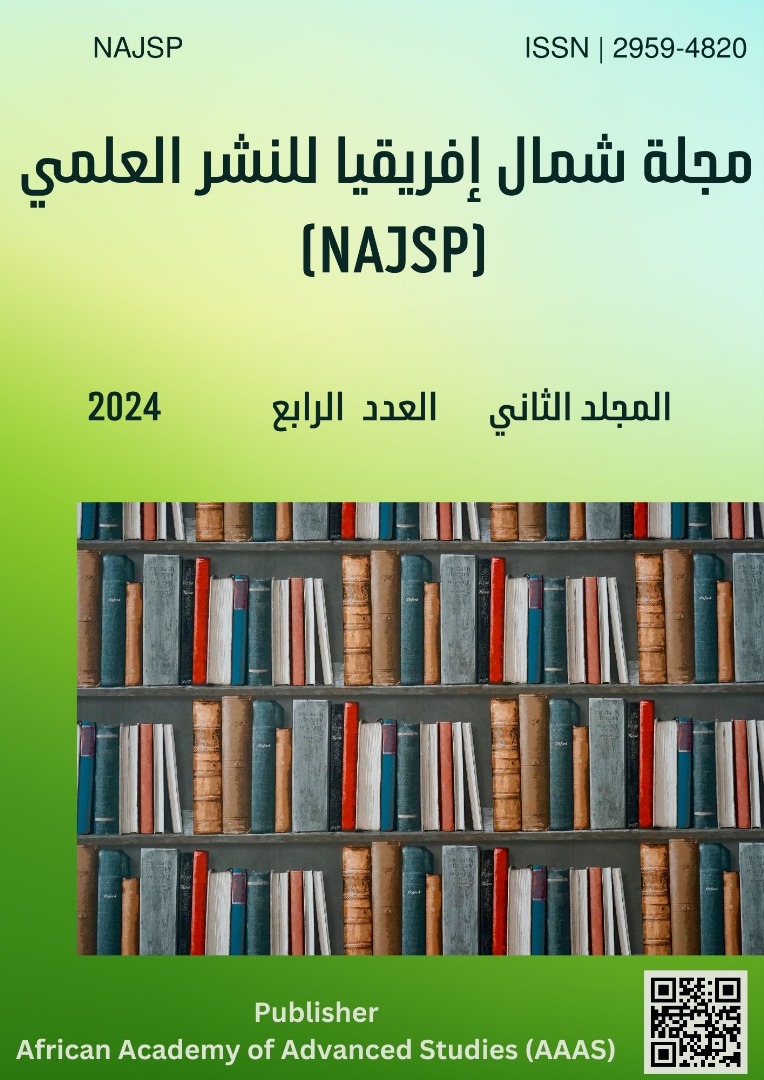Utilizing Orange Charcoal from Citrus Biomass for Effective Methylthioninium Chloride Dye Removal
DOI:
https://doi.org/10.65414/najsp.v2i4.279الكلمات المفتاحية:
Orange Charcoal، Hcl-Activated Carbon، Methylthioninium Chloride، Wastewater Treatment، Adsorption Capacityالملخص
This study explores the efficacy of orange charcoal, a biochar produced from citrus biomass and activated with hydrochloric acid, for the removal of Methylthioninium Chloride (MC) dye from aqueous solutions. The escalating presence of synthetic dyes in industrial effluents underscores the urgent need for effective remediation strategies. Batch experiments conducted at 25°C demonstrated a remarkable removal efficiency of 97% and an adsorption capacity of 1.56 mg/g, utilizing 0.5 grams of the adsorbent in 50 milliliters of a 16 mg/L dye solution at pH 5. Equilibrium was attained within 20 minutes, signifying rapid adsorption kinetics. The adsorption data were optimally described by the Freundlich isotherm model and conformed to a second-order kinetic model. These findings underscore the potential of orange charcoal as a highly effective adsorbent for Methylthioninium Chloride, thereby significantly enhancing the efficacy of wastewater treatment and advancing sustainable waste management practices.
التنزيلات
منشور
كيفية الاقتباس
إصدار
القسم
الرخصة
الحقوق الفكرية (c) 2024 Mohamed Ali Aldeib, Mohammed Faraj Bareeni, Mohamed Hassan Abu Deab

هذا العمل مرخص بموجب Creative Commons Attribution 4.0 International License.







